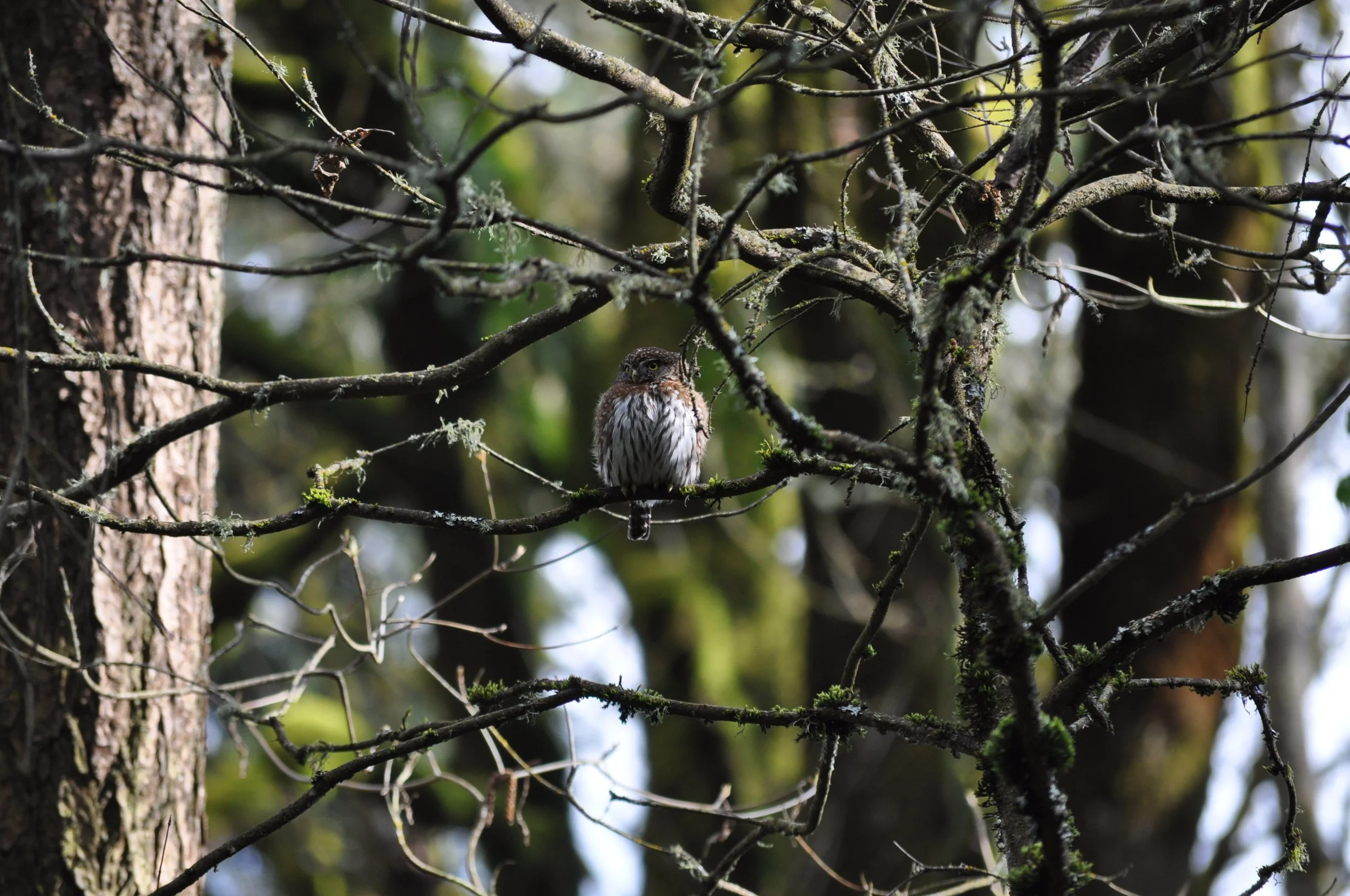About the Owls
Learn about the real pygmy-owls and events that inspired the characters and stories in The Pygmy-Owls of Forest Park. Fresh content (photos, videos, science results) will be added to this page at regular intervals beginning in May 2025.
A collection of awesome high resolution photos can also be viewed and purchased here: https://www.scottcarpenterphotography.com/search#q=pygmy-owls
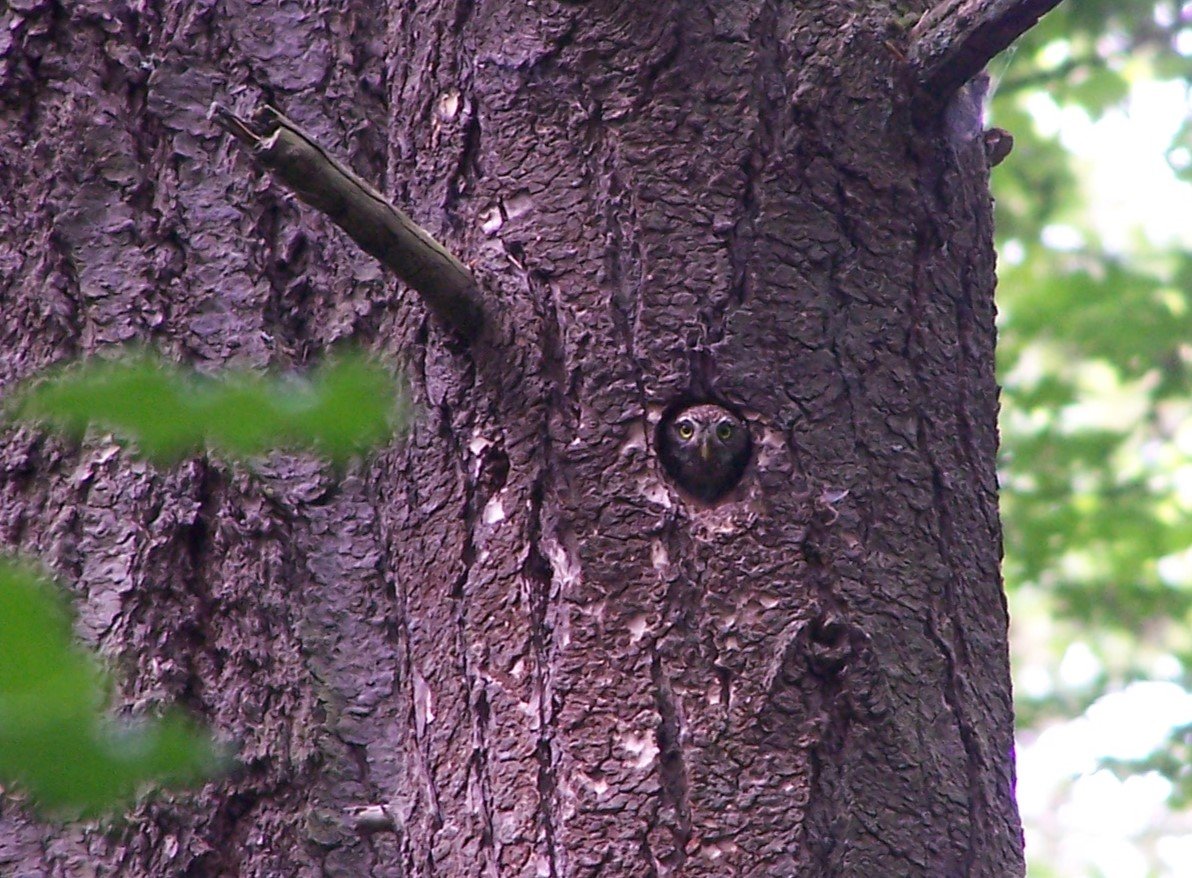
A female pygmy-owl emerges from her nest cavity near the Maple Trail back in June of 2007. It was the first of 5 nests that I found in Forest Park that year, and the first of 87 nests that I ultimately found in the park over the years. She laid only 4 eggs that year. The nest was successful!
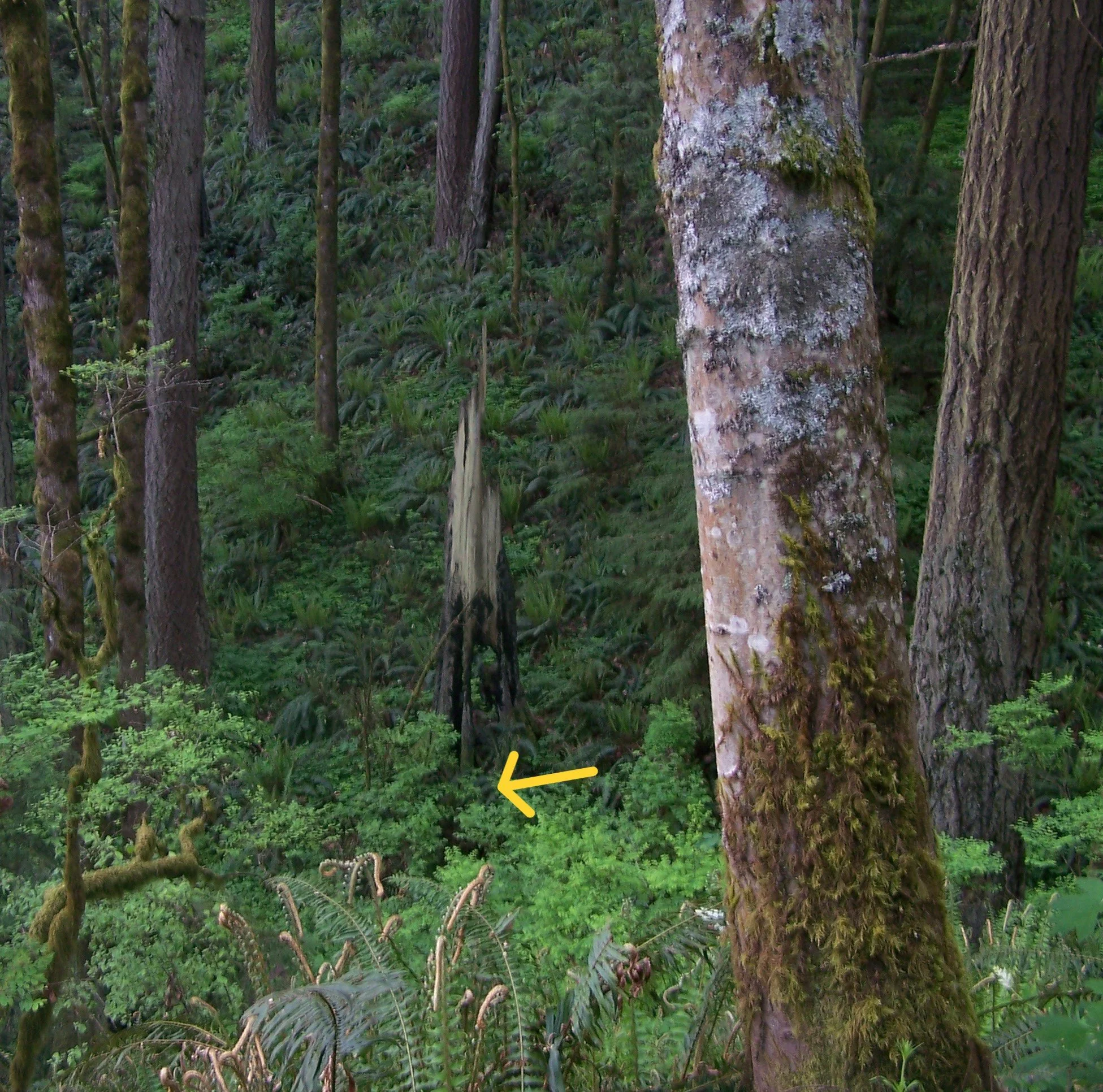
The coolest nest I ever found was at the base of this burned out stump snag in 2007. I didn't know much about how to find nests back then and was frustrated after many days of searching for this one. So I sat down next to that stump to take a break. I was lazily tracing the outline of a hole in the stump with my index finger when the female popped out of the nest hole on the other side (yellow arrow). I could not have been more surprised. I was seating on the ground and the hole she came out of was below me.

The third pygmy-owl nest found in 2007 was in an enormous cavity near the bottom of the burned out stump described in the prior photo. The character "Rochelle" is based the female that nested there and at a different stump in 2008.

A one-day-old nestling prior to being weighed, measured, and returned to its stump nest in 2008. Actual events at this nest inspired many parts of the book, including some in the "Measure of Success" chapter.
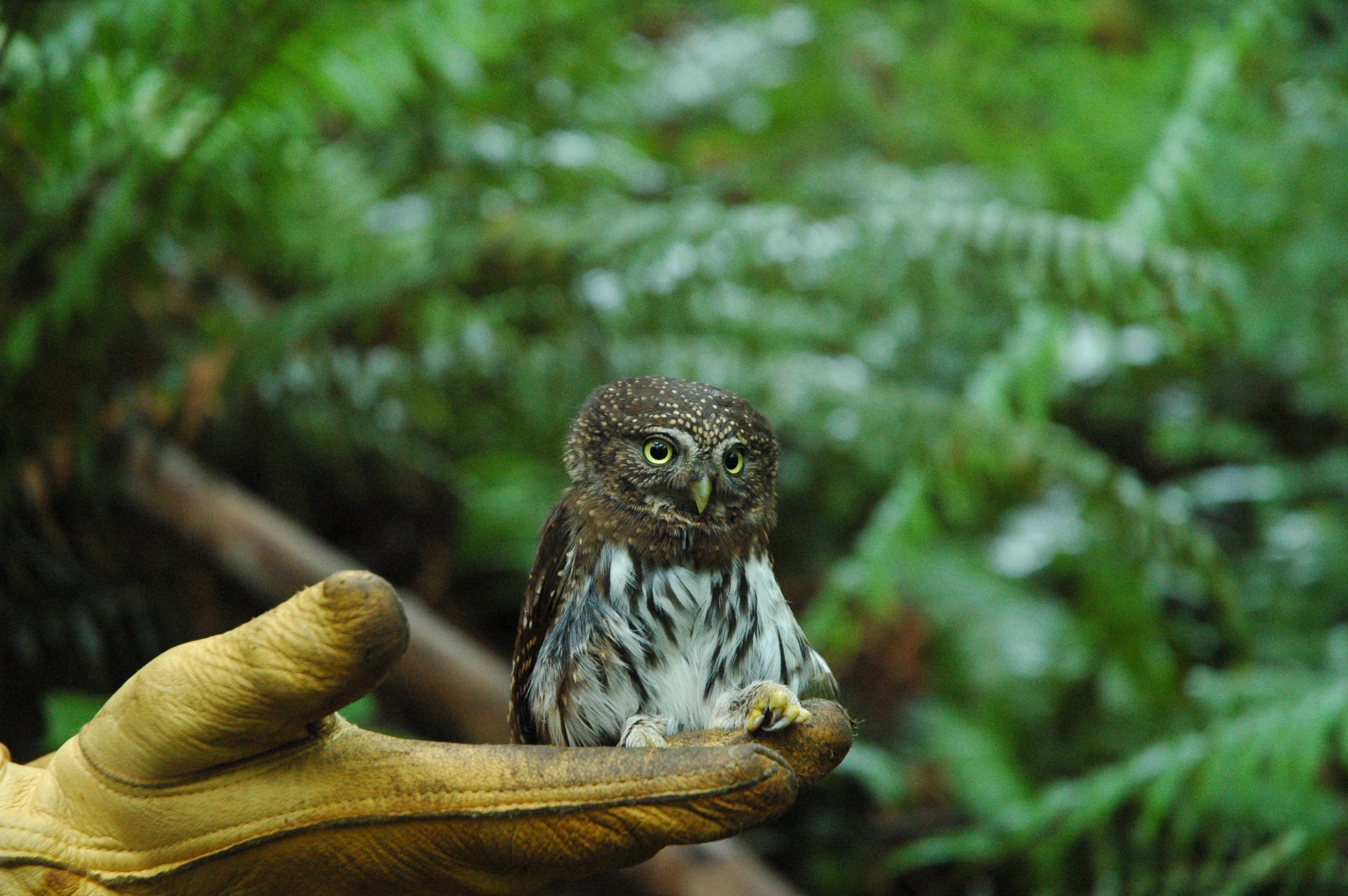
An adult pygmy-owl captured, banded, and released near the Hardesty Trail in 2008. The pair there successfully raised six owlets that year. Observations of a Great Horned Owl at the pygmy-owl nest inspired portions of the Predator chapter. Photo by Lisa Ripps who volunteered to help find nests that year.
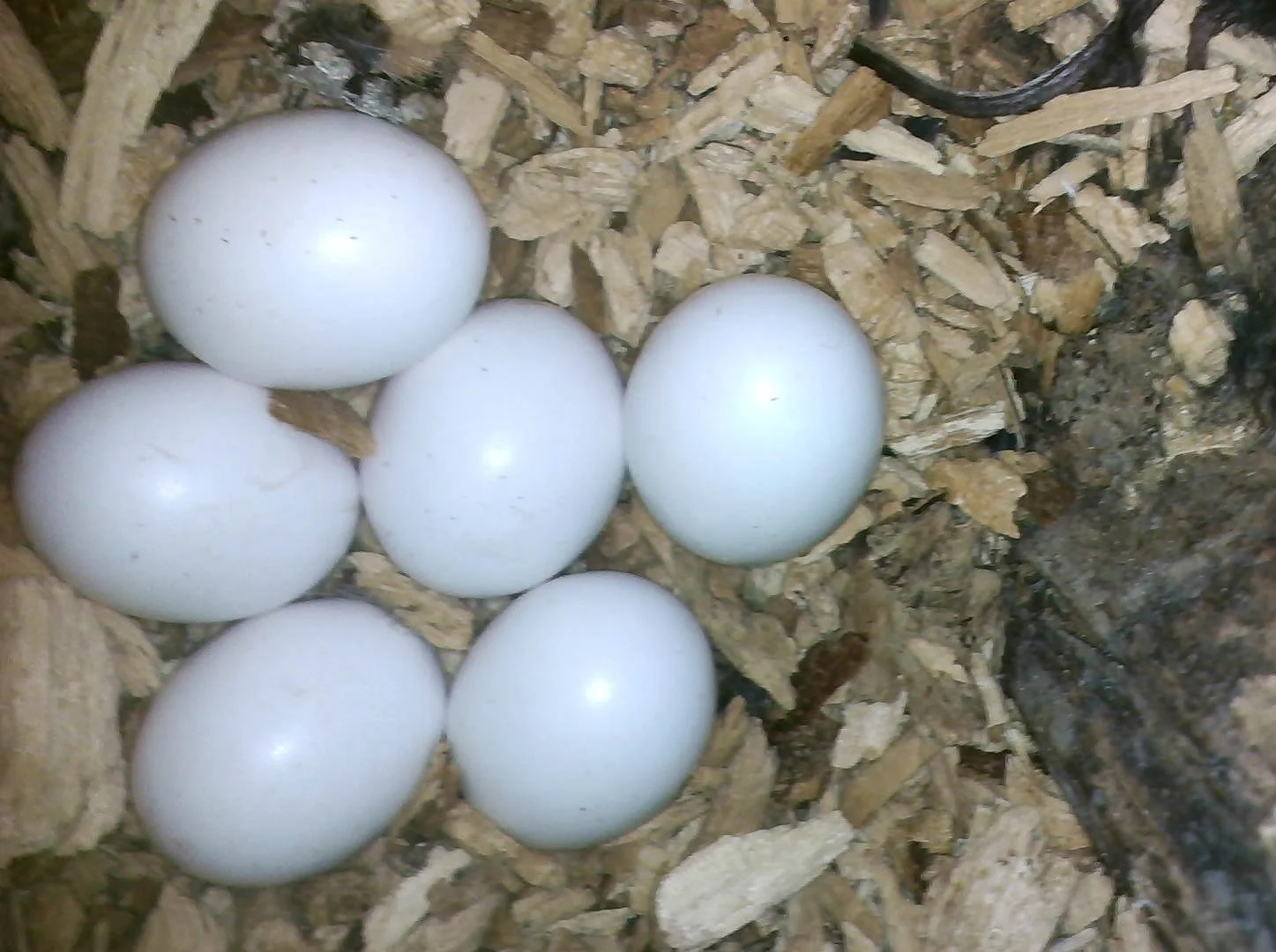
A 6-egg clutch at a pygmy-owl nest in 2019. That year I bought a hi-res endoscope camera that provided excellent details during nest checks. Here, the tail of a prey animal (a small mammal) can be seen in the upper right.
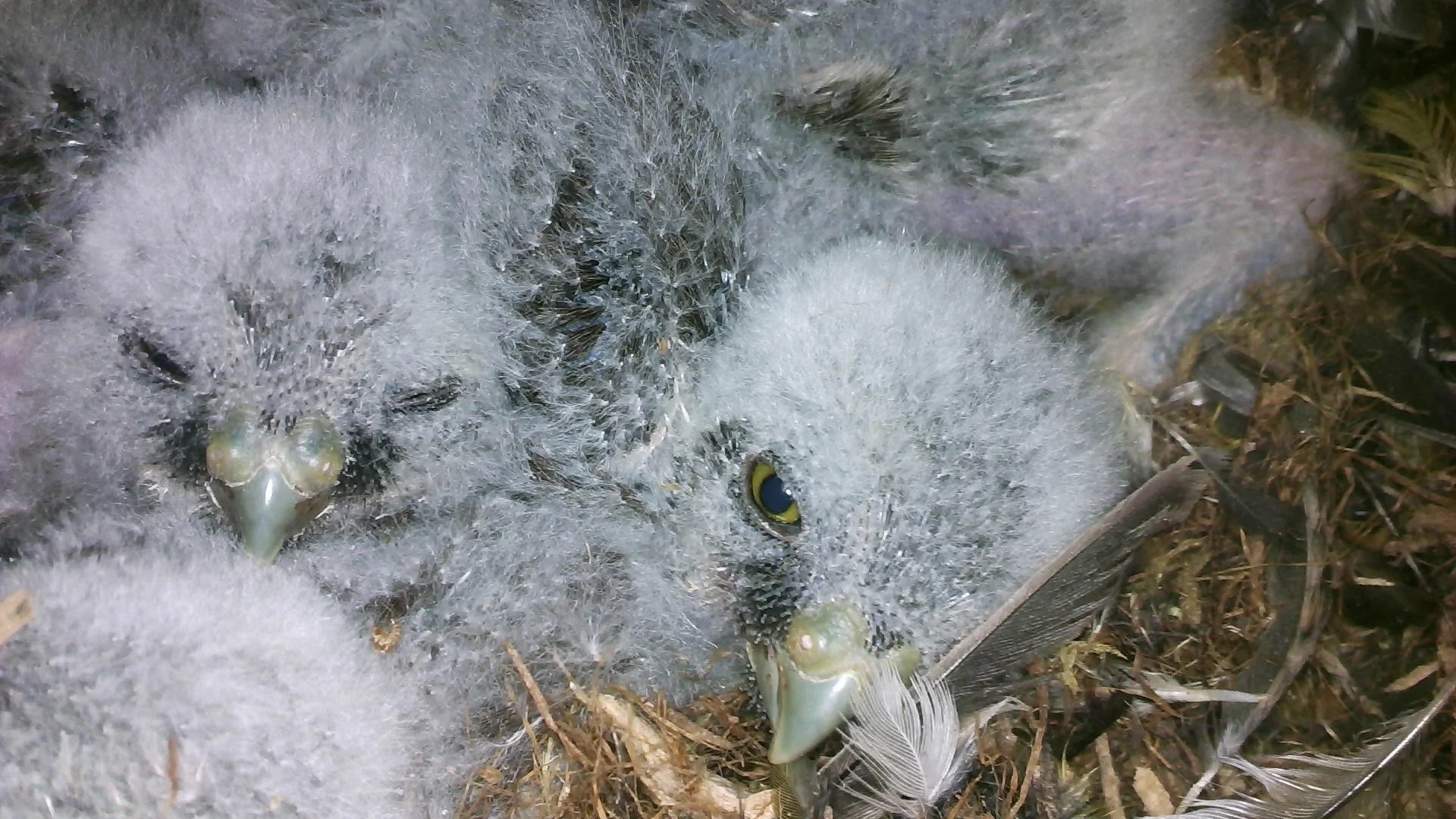
Because people rightly care about the well-being of owls and other wildlife, photos of birds in a nest cavity, or birds that have been captured, can seem particularly intrusive and sometimes elicit negative reactions. My goal was always to get the numerical data I needed, then leave the owls alone. Nest checks were typically brief and widely spaced in time so that intrusion into the owls' lives was minimized. I wanted their outcomes to be natural outcomes. The data I was collecting were often related to clutch size, brood size, nestling survival, laying dates, hatching dates, nest departure dates, prey, and adult body size in relation to a host of variables. Good science is grounded in numerical data and statistical analyses so the getting the numbers right matters. Although pygmy-owls certainly view humans as a potential threat, the fact that the nests I researched were overwhelmingly successful and were sometimes reused by the same pairs in the subsequent years, were indications that my impact was light and they had some tolerance. As an example, one nest required tree climbing to check the clutch size and the female was captured and measured there each year it was active; despite those research activities the pair successfully nested in the same tree for three years in a row (see "Tree Climbing" in the book for details).
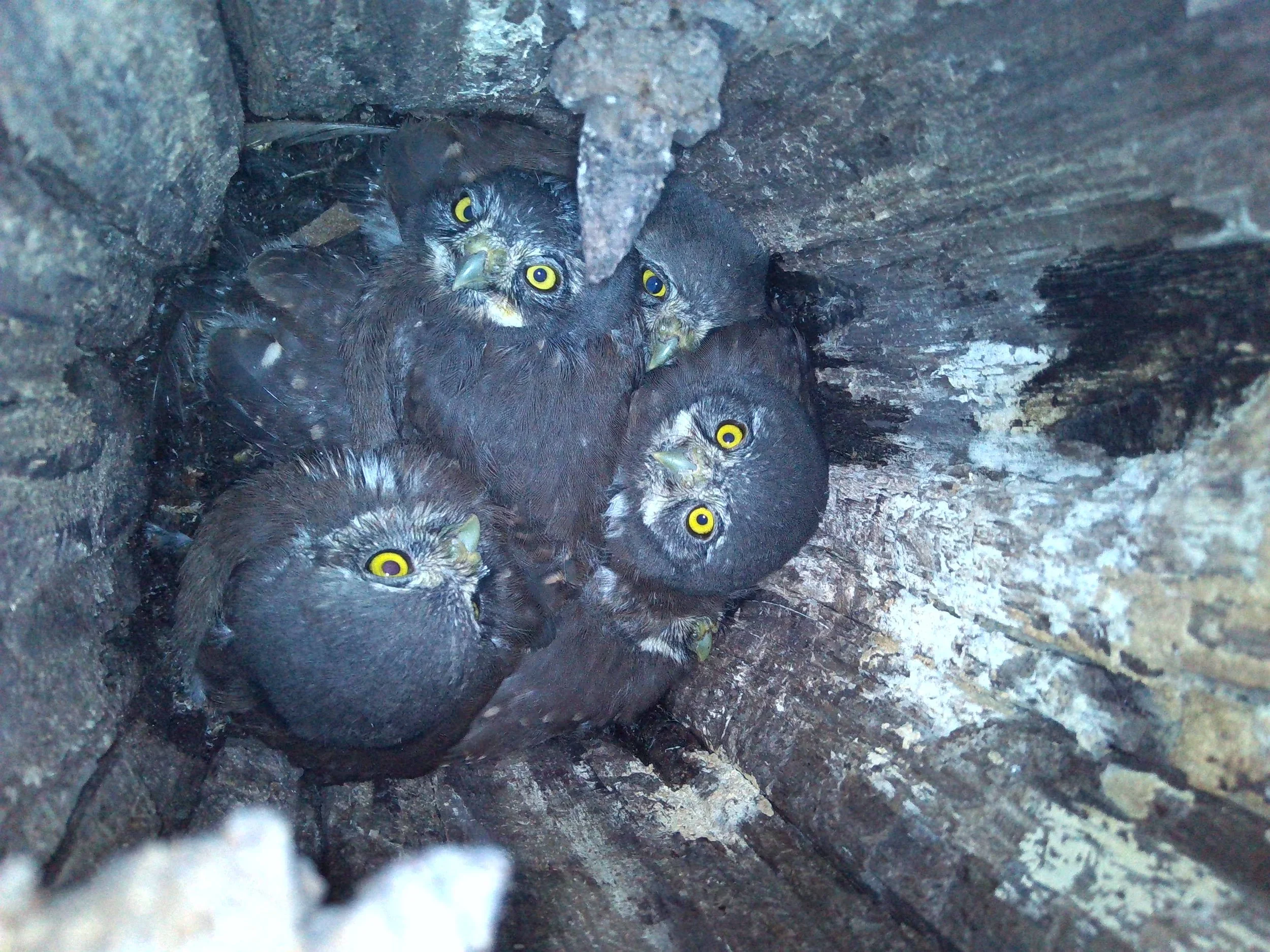
This cramped nest near the upper northwest fork of Miller Creek in 2023 appears to hold only four nestlings, but as the next photo shows...
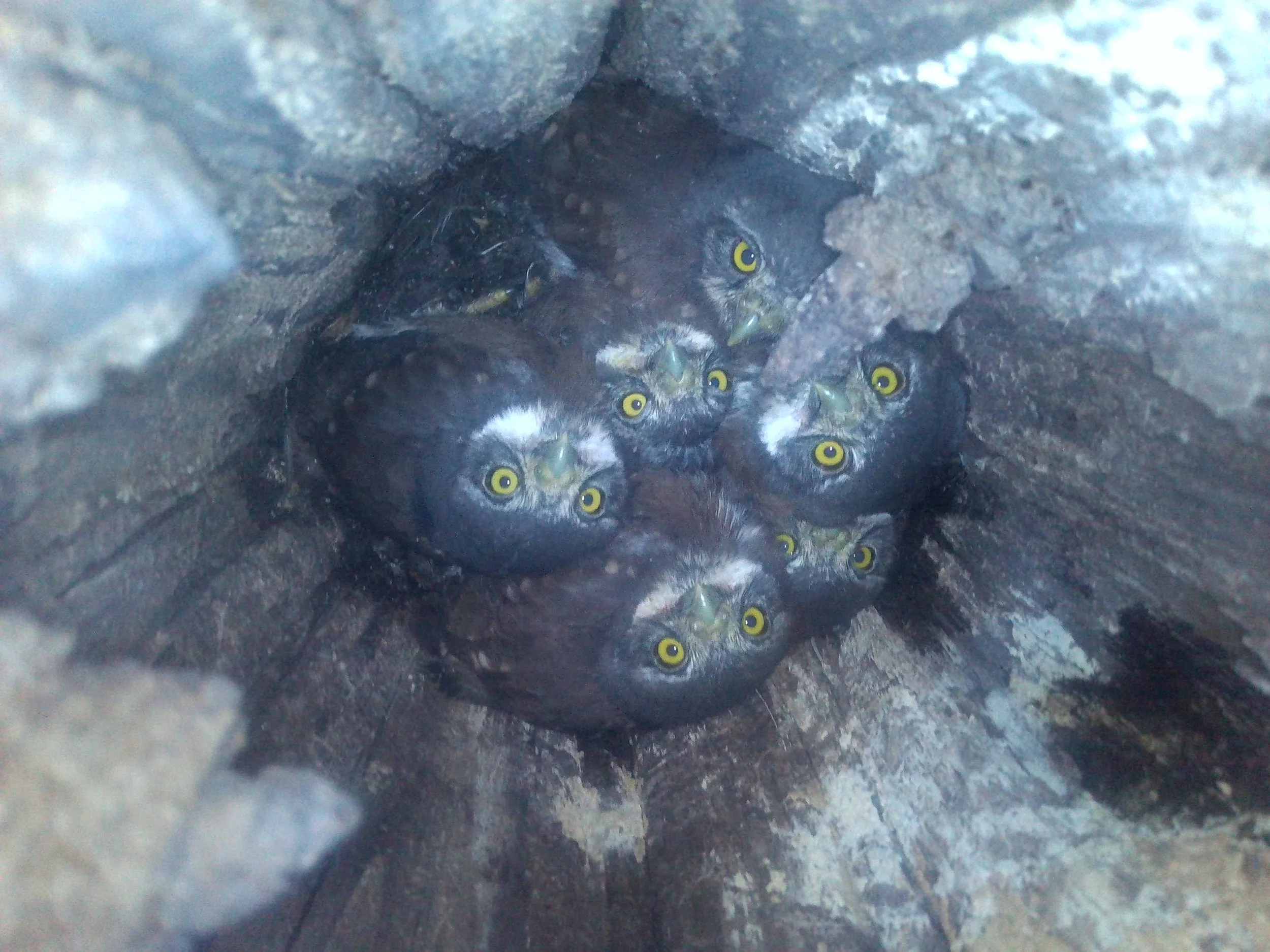
...there were actually six! This photo was taken just a day before this brood began departing the nest. Their mother had disappeared two weeks prior, and was presumed dead, but their father continued to care for them, delivering food to them as nestlings, and for another 4 to 5 weeks after nest departure.
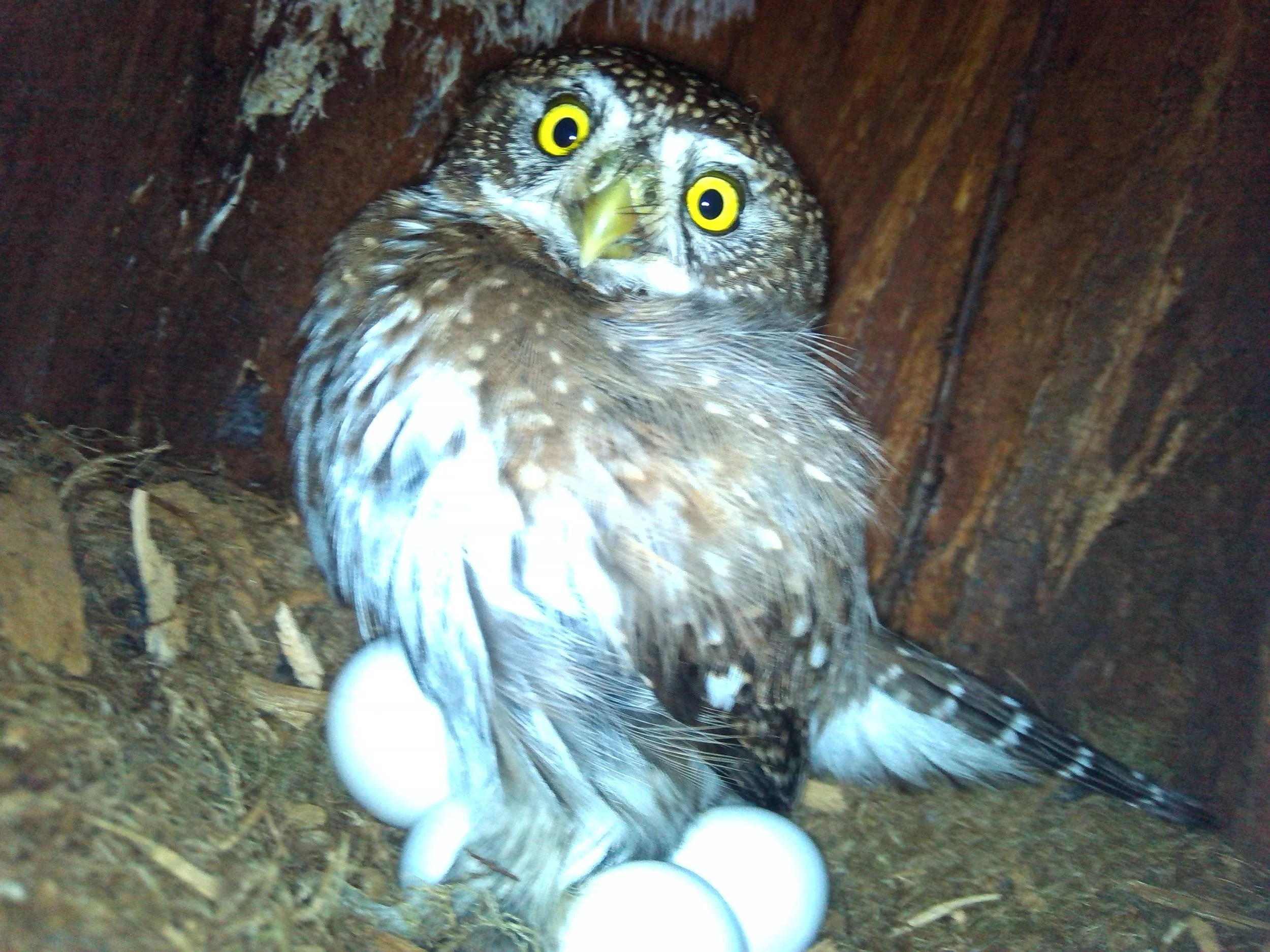
Some pygmy-owl nests are snug, especially the ones excavated in recent years by woodpeckers. But in 2023, this female chose a roomy one, 35 feet high in a large, live redcedar tree near the upper south fork of Miller Creek. The nest opening was at eye-level with the occupant, but she and her clutch had plenty of room to safely position themselves away from the opening. Although she began laying eggs in early May, a late start relative to most years, she still produced 5 eggs and all her nestlings successfully departed the nest.

A pygmy-owl can sometimes appear plump and solidly built when perched atop a tree in winter, but this image of an adult male in the hand lends a more accurate perspective. He weighed less than 60 grams (about 2 ounces). He was, of course, released unharmed, and he and his mate successfully raised a small brood of four owlets that year. Body size is often an intriguing metric in avian studies, as it has been in my research.
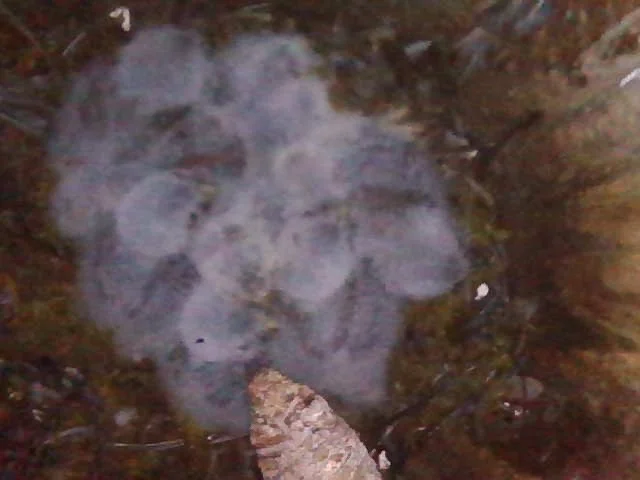
This brood of 7 nestlings was 12-13 days old on May 20, 2025. They all successfully departed the nest from 6/2 and 6/4, which means they had an "early start" to nesting. The adult pair raised owlets in the same nest the prior year (2024), but that brood was smaller (5 eggs and nestlings) and departed the nest nearly 3 weeks later (6/22-6/23/2024) than in 2025. See "An Early Start" in the book for details.
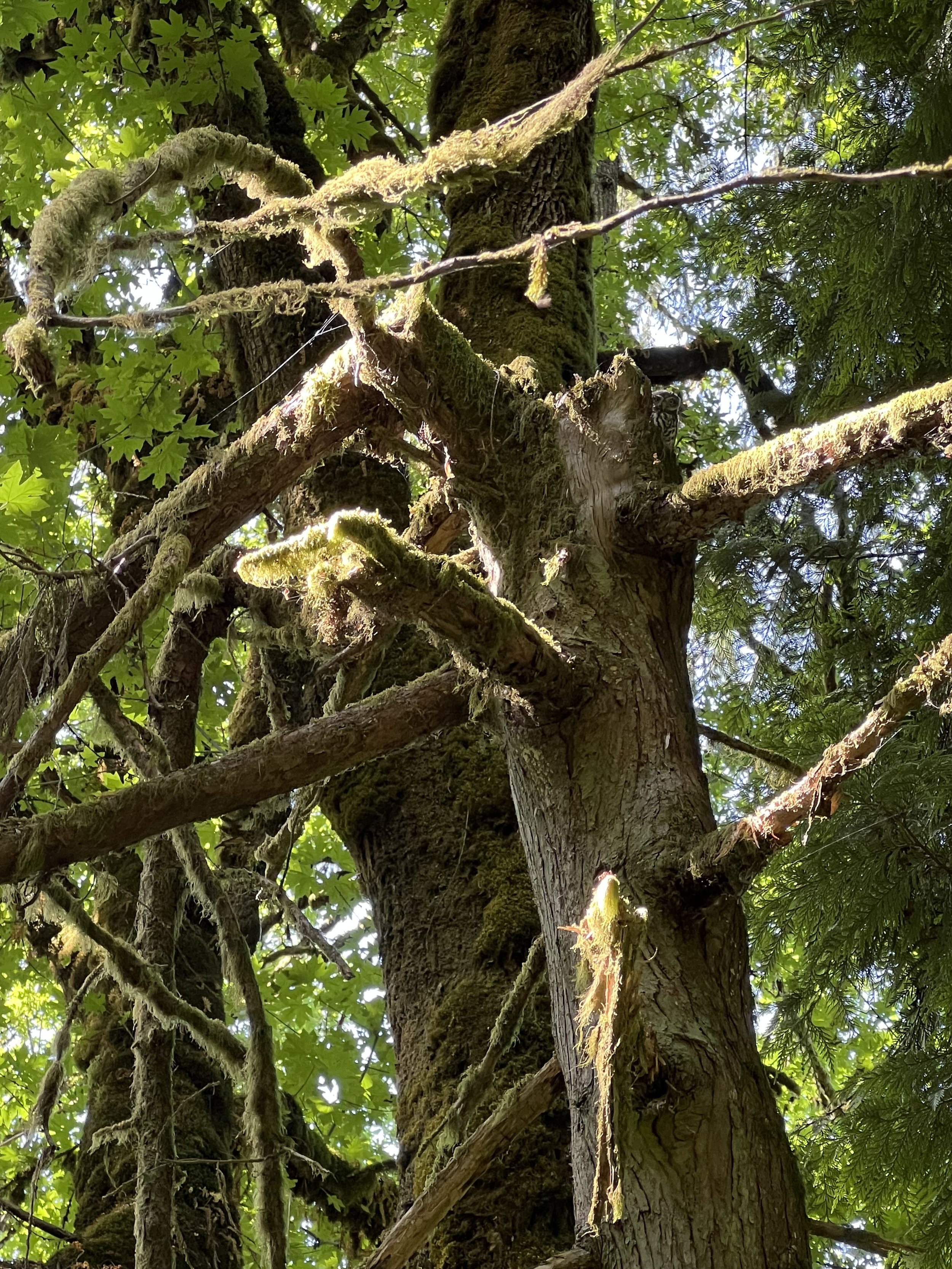
A fledgling pygmy-owl - the first of its brood to depart the nest - sits atop its nest snag, the 87th one I have found in Forest Park. Can you find the tiny owlet? Although this owlet climbed the tree trunk, pygmy-owls are unusual in that they often leave the nest by simply taking flight the moment they depart the nest cavity, never to return to it. Among many other species, young owls perch on their nest trees, or sometimes the ground, for several days before taking flight.
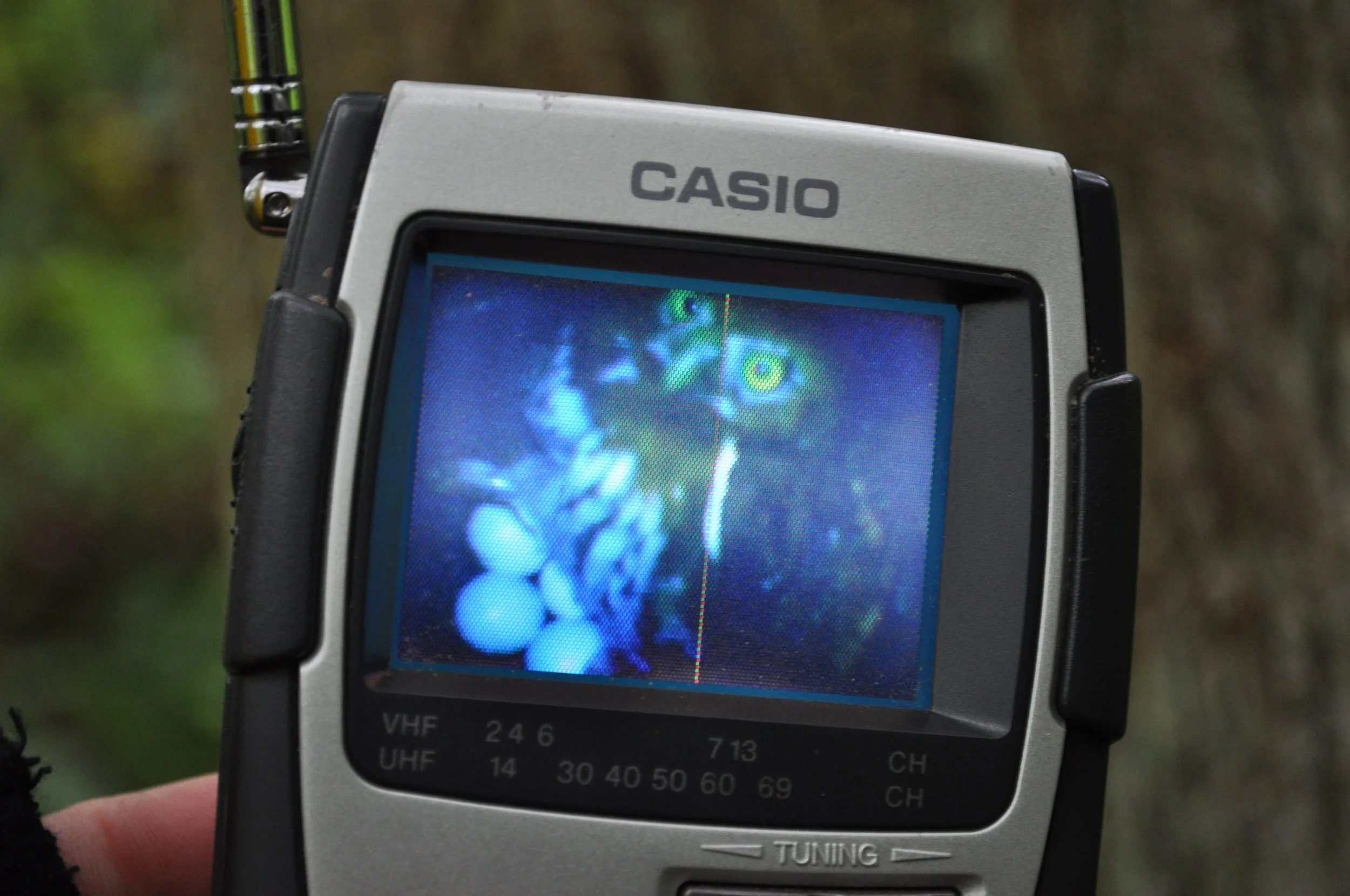
This is the most fecund female pygmy-owl ever known sitting on the largest clutch ever documented for the species. From 2008 to 2010, she laid clutches of 6, 7, and 8 eggs. The 8-egg clutch is a singular world record for the species. All three nests were successful. Back in those years, I made nest checks using a tiny Mace security camera mounted to a telescoping pole. It broadcasted a video signal to a handheld Casio TV, a cheap, wireless nest check system. Each time I turned the TV on, it would scan for an available signal. Often, the first thing I would see while standing in the damp forest at the base of a nest tree was some soap opera, like Days of Our Lives...
